If you just want the actual mod and arent interested in the journey just skip to post 2.
Here are some experiments you might find interesting anyway.
Individual measurements below, where you can see the harmonic distortion and group delay.
Note that the cursor line is the same in all the screenshots so it might give you an idea relative between the photos.
I'm also showing group delay, which is a measure of phase distortion.
When a signal bounces around and reflects from objects (such as the inside of the cup, etc), its arrives later than the direct signal and with a phase shift. In theory good design advocates we should minimise this bouncing as it can worsen imaging.
I'll add the individual measurement images below in spoilers, just to keep the clutter to a minimum.
Stock - starting point

Group delay
 Rear grille removed
Rear grille removed

Group delay
 Cotton between the driver and rear grille (that whole space filled with regular cotton)
Cotton between the driver and rear grille (that whole space filled with regular cotton)

 Cotton on back, cloth over the cotton, no grille
Cotton on back, cloth over the cotton, no grille


Results:

Compared to stock, just putting a lot of cotton for driver back damping reduces output, however it reduces it much more on the lower frequencies than the high, resulting in an overall "brighter" image. notice also the high-Q dip is no longer so sharp, but has reduced in size. Adding a cloth over the cotton raises the high frequencies, it is rather "breathable" fabric (and you can easily breathe through it) so maybe it impedes lower frequencies less, but the high frequencies suddenly see high acoustic impedance and reflect back.

We can see in the group delays how well just the cotton does at taking this energy that would have bounced around, and just dissipating it as friction between the fibers. Adding the cloth adds back some GD, corroborating the theory that it is a barrier to higher frequencies and causes them to reflect, but if you have your theory i'm always happy to learn.

In terms of THD %, roughly the same performance, with cotton+ cloth having a possibly notably lower overall THD.
Regarding the grill vs no grille question:

Without grills the FR is raised, repeating both measurements many times always shows the same result.
The thing is removing the grills isnt just about them being resonant, there's also a structural question. Normally the driver seals on the grills back side, then the grills front side seals on the outer shell plastic. With them removed, you can assemble the headphones just fine but now the headphone seals against the plastic directly, and sits 1mm deeper inside the shell. Insignificant? Well maybe not according to measurements, but someone else should try to replicate this result. Notice also the bass rolloff curve is much steeper, probably to do with this sealing. Probably you can add some gasketing material, if you still wish to remove them.
The resonance of the grille has a fundamental starting at 1.2k and moving up, there is no indication on any of the graphs any ringing is taking place, so removing the grill for this reason as some have theorised is unecessary.
Despite that it seems that removing the grilles does seem to reduce some reflections in the midrange.

Here is the kind of cotton and cloth used:

Here are some experiments you might find interesting anyway.
Individual measurements below, where you can see the harmonic distortion and group delay.
Note that the cursor line is the same in all the screenshots so it might give you an idea relative between the photos.
I'm also showing group delay, which is a measure of phase distortion.
When a signal bounces around and reflects from objects (such as the inside of the cup, etc), its arrives later than the direct signal and with a phase shift. In theory good design advocates we should minimise this bouncing as it can worsen imaging.
I'll add the individual measurement images below in spoilers, just to keep the clutter to a minimum.
Stock - starting point
Group delay
Group delay
Results:
Compared to stock, just putting a lot of cotton for driver back damping reduces output, however it reduces it much more on the lower frequencies than the high, resulting in an overall "brighter" image. notice also the high-Q dip is no longer so sharp, but has reduced in size. Adding a cloth over the cotton raises the high frequencies, it is rather "breathable" fabric (and you can easily breathe through it) so maybe it impedes lower frequencies less, but the high frequencies suddenly see high acoustic impedance and reflect back.
We can see in the group delays how well just the cotton does at taking this energy that would have bounced around, and just dissipating it as friction between the fibers. Adding the cloth adds back some GD, corroborating the theory that it is a barrier to higher frequencies and causes them to reflect, but if you have your theory i'm always happy to learn.
In terms of THD %, roughly the same performance, with cotton+ cloth having a possibly notably lower overall THD.
Regarding the grill vs no grille question:
Without grills the FR is raised, repeating both measurements many times always shows the same result.
The thing is removing the grills isnt just about them being resonant, there's also a structural question. Normally the driver seals on the grills back side, then the grills front side seals on the outer shell plastic. With them removed, you can assemble the headphones just fine but now the headphone seals against the plastic directly, and sits 1mm deeper inside the shell. Insignificant? Well maybe not according to measurements, but someone else should try to replicate this result. Notice also the bass rolloff curve is much steeper, probably to do with this sealing. Probably you can add some gasketing material, if you still wish to remove them.
The resonance of the grille has a fundamental starting at 1.2k and moving up, there is no indication on any of the graphs any ringing is taking place, so removing the grill for this reason as some have theorised is unecessary.
Despite that it seems that removing the grilles does seem to reduce some reflections in the midrange.
Here is the kind of cotton and cloth used:
Attachments
-
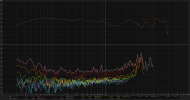 1740515967505.png670.2 KB · Views: 69
1740515967505.png670.2 KB · Views: 69 -
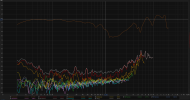 1740517223964.png670.1 KB · Views: 1,554
1740517223964.png670.1 KB · Views: 1,554 -
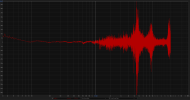 1740517241955.png349.7 KB · Views: 1,553
1740517241955.png349.7 KB · Views: 1,553 -
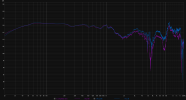 1740520475700.png214.4 KB · Views: 56
1740520475700.png214.4 KB · Views: 56 -
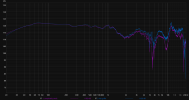 1740520536963.png216.3 KB · Views: 55
1740520536963.png216.3 KB · Views: 55 -
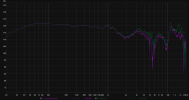 1740522586765.png210.9 KB · Views: 57
1740522586765.png210.9 KB · Views: 57 -
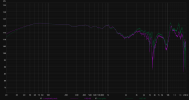 1740522730051.png210.8 KB · Views: 58
1740522730051.png210.8 KB · Views: 58 -
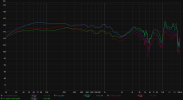 1740523483586.png217.3 KB · Views: 55
1740523483586.png217.3 KB · Views: 55 -
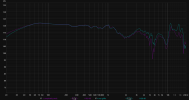 1740526503822.png171 KB · Views: 60
1740526503822.png171 KB · Views: 60 -
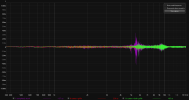 1740527062475.png220.5 KB · Views: 58
1740527062475.png220.5 KB · Views: 58 -
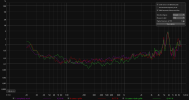 1740527235719.png213.3 KB · Views: 54
1740527235719.png213.3 KB · Views: 54 -
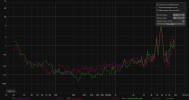 1740527344126.png255.5 KB · Views: 88
1740527344126.png255.5 KB · Views: 88
Last edited:


